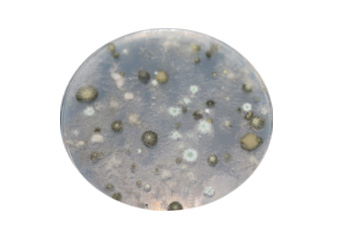 Going for a walk or drive in the country and viewing the fall colors when the leaves turn in the Boston area is a favorite pastime of residents of and visitors to the area. Leaf mold associated with autumn leaves in Massachusetts may have gotten into the indoor environment of the New England Compounding Center of Framingham, Mass., the source of a steroid used to treat back pain.
Going for a walk or drive in the country and viewing the fall colors when the leaves turn in the Boston area is a favorite pastime of residents of and visitors to the area. Leaf mold associated with autumn leaves in Massachusetts may have gotten into the indoor environment of the New England Compounding Center of Framingham, Mass., the source of a steroid used to treat back pain.
The F.D.A. warned that some vials of steroids used to treat back pain had become contaminated with leaf mold. These injections have been associated with meningitis. according to the Associated Press report published October 3rd.
According to the AP story, it “…became apparent Thursday that hundreds, and perhaps thousands, of people who got the shots between July and September could be at risk. Officials disclosed that a steroid suspected in the fungal meningitis outbreak in the South had made its way to 75 clinics in 23 states.”
So the connection between the indoor environment where drugs are prepared and the microbes commonly found outdoors can be important and more attention is likely to be paid to it in the future.

Sterility is really the unnatural state. Louis Pasteur’s goose neck flasks remain a sceptic to this day at the Institut Pasteur, but the remarkable thing is how recently we came to understand the nature of sterile environments. Centuries after we derived calculus and inferred the nature of the solar system.
How many of your students rely on “the 5 second rule”, but in the operating room or tissue culture hood the rule is “contact”. We still don’t entirely get it.
David:
I am not certain what your point is. Of course sterility is not a “natural state;” nor is injecting steroids near nerves in the human spine to reduce or eliminate pain emanating from the region where the nerve is found.
But do you want to suggest that injecting leaf mold into the region of the spine is a “natural state?”
We humans have (and need) lots of bacteria in our guts, and there are a lot more on our skin and in our upper respiratory tract as well. These surfaces and regions of the body are normally exposed to the environment — air, water, and food. In all, the bacteria count we carry around with us is roughly ten times the number of cells in our bodies. But leaf mold is not “natural” indoors, and we need to understand how it gets indoors; what affects its survival, reproduction, and dissemination indoors; and what its effects are on the indoor environment and us. In the case of the pharmaceutical company in this story, there is a need to know how to protect products intended for injection (or human consumption) from contamination by leaf mold.
David: did I miss something?
Thanks,
Hal